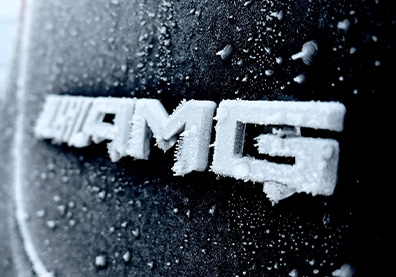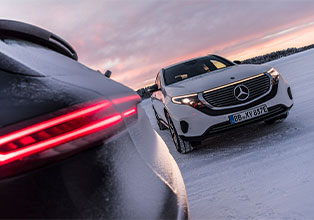We use cookies to make your experience better. To comply with the new e-Privacy directive, we need to ask for your consent to set the cookies. Learn more.


Why Does Rear-Wheel-Drive Struggle in Snow?
It is well known that vehicles perform very differently when faced with winter driving conditions depending on their drivetrain orientation - namely whether they are front-wheel-drive, rear-wheel-drive, or all-wheel-drive (AWD). Largely a product of weight distribution and the ability to utilise all available traction, it goes without saying that all-wheel-drive is resoundingly the best of the bunch.
However, equally as prominent at the bottom of the scale are rear-wheel-drive vehicles. These are, by design, the most likely to struggle in adverse weather conditions. Here, we take a look at why.
The home of all-wheel-drive
By its very nature, a vehicle utilising AWD is by far the best equipped to deal with challenging conditions because they maximise available traction. Mercedes-Benz 4MATIC is an intelligent all-wheel-drive system that autonomously applies accelerating and braking force to all four tyres independently of one another. This offers the driver use of torque through all four wheels instead of more conventional two-wheel-drive vehicles which only send torque to either the front or rear wheel-set.
That said, there is more to driving well in snowy conditions than the number of wheels being utilised. Another essential component of all-wheel drive vehicles is that the vehicle’s weight is shared equally across all of its driving wheels. This not only increases traction but prevents the vehicle tipping when tackling the more extreme terrain.
Weight distribution
Advancements in technologies such as Traction Control and Electronic Stability Programme (ESP), plus the addition of winter tyres, help to prevent wheel-spin and assist with acceleration on low-traction surfaces. Nevertheless, rear-wheel-drive cars still suffer noticeably more than their front-wheel-drive counterparts when tackling slippery road surfaces. The reason for this lies largely with the fact that the engine is placed over the powering wheels in a front-wheel-drive vehicle. In contrast, it is usually the boot or open cargo space that sits above the powering wheels in rear-wheel-drive cars.
The benefit of having the weight of the engine above the driving wheels is that it keeps them firmly planted to the ground. Without this added traction, wheel-spin and fishtailing occur more frequently when accelerating. One common suggestion for solving this problem is to load your rear-wheel-drive vehicle with added weight while driving in wintery conditions. By putting big bags of soil or sand into the boot you are creating the necessary grounding force to the rear of the car, where it needs it most.
However, make sure you remove the weight when conditions improve as this will significantly affect handling, braking and of course fuel usage. For more tips on how to ensure your car is best equipped for driving in ice and snow, read our safety tips for driving in adverse weather.
The advantages of rear-wheel-drive
While the weight distribution of rear-wheel-drive cars isn’t suited to driving in snow and ice, it is, in fact, one of its main pull factors. Because the engine is in the front and the driving compartments are in the back, the weight distribution throughout the vehicle is far more even than in front-wheel-drive cars that harbour both at the front.
(Note: the difference to all-wheel-drive cars is that this weight is not being spread across four powered wheels.) This better weight balance improves a number of driving characteristics including handling, stopping and accelerating. Most notably, this is because the front wheels are left solely to concentrate on the important work of steering while the rear ones do the accelerating.
Overall, in most driving conditions, it allows the driver to enjoy a more performance-oriented experience. It is for this reason that you are most likely to see rear-wheel-drive capabilities associated with high-performance vehicles. So, while rear-wheel-drive isn’t the best choice for those of us having to contend with bucket loads of that soggy, white stuff, it is likely to be the preferred choice for many.
From no traction to lots of it: the G-Class
This classic Mercedes-Benz model boasts the flexibility of being a rugged off-road icon, while remaining at the forefront of luxury SUVs. On-road, the G-Class is quiet, comfortable, and classy. Off-road, the G-Class flicks a switch and turns into a completely different beast. The type of beast that will never give up on you, will always get you there, and make what seem like impossible adventures off-road, possible. One of its specialities is finding traction where there isn’t any, and it’s all made possible by the advanced technologies on-board.
The 4ETS (Electronic Traction System) interacts perfectly with 4MATIC, ABS and ESP, providing optimum ride comfort and capabilities, while the axle architecture and independent wheel suspension add only more traction. It’s the versatility of the G-Glass that makes it so unique.
Explore our range of models across our Exeter, Plymouth, Taunton, and Truro dealerships.



